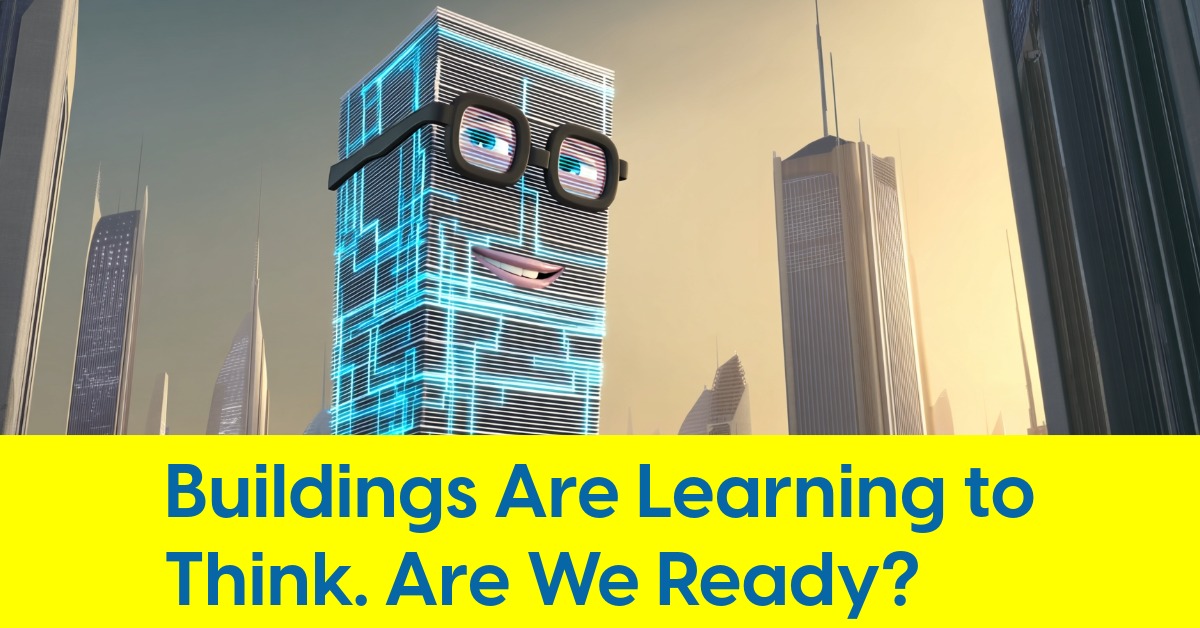November 24, 2025
Buildings Are Learning to Think. Are We Ready?
A.I. meets Lighting and HVAC: are truly smart buildings finally within reach?
It’s been said that smart buildings aren’t really smart. They’re just obedient.
They follow pre-set rules, respond to commands, and operate within the narrow confines of human programming. But with the rise of artificial intelligence, that dynamic is changing. Lighting systems, HVAC infrastructure, and energy management platforms are beginning to think for themselves.
The shift is quiet but profound. Building Energy Management and Control Systems (BEMCS) — the unglamorous software-hardware hybrids once relegated to the backrooms of commercial facilities — are evolving into autonomous decision-makers. These systems, now powered by AI, are no longer just monitoring and reacting. They’re predicting, adapting, and optimizing energy use in real time. The result? Sharper control, steeper efficiency gains, and a new frontier in how buildings light, heat, and cool themselves — sometimes without human intervention at all.
The American Council for an Energy-Efficient Economy (ACEEE) has released three technical briefs outlining how these systems are evolving, with AI rapidly emerging as a catalyst for change. “We find that AI is transforming smart buildings, making them more intelligent, adaptive, and efficient,” writes ACEEE Executive Director Steven Nadel, who authored one of the briefs. At a time when energy efficiency and emissions targets are colliding with rising utility costs, the blend of lighting, HVAC, and AI might just be the most underreported story in the built environment.
Energy Savings Beyond the Brochure
At their core, smart buildings use a combination of sensors, software, and user interfaces to monitor lighting, HVAC, and other systems. While this might sound like standard automation, what makes today’s systems notable is their capacity to learn. The ACEEE briefs cite energy reductions between 10% and 25%, depending on building type and system sophistication. A study of fault detection systems across 550 buildings, for instance, showed median energy savings of 8%, with upper-end savings hitting 25%.
Case studies put hard data behind these projections, showing that HVAC is driving a significant share of the available energy-savings opportunity. A Microsoft campus retrofitted its HVAC systems with cloud-based analytics and machine learning tools and saved $700,000 in the first year alone, cutting energy use by 20% and reducing technician visits by 40%. Meanwhile, Dollar Tree implemented AI-based HVAC optimization in over 600 stores, saving nearly 8 million kWh and over $1 million annually, while reducing emissions by over 5,600 metric tons.
AI: From Forecasting to Fault Fixing
Where older systems might’ve triggered a light or nudged a thermostat, AI-enhanced smart buildings do far more. They build “digital twins” of building systems, forecast energy loads based on weather and occupancy, and adapt in real time — essentially allowing buildings to learn their occupants’ patterns and environmental context.
“In just two months, 400 Dollar Tree stores were operating autonomously,” the report notes, citing BrainBox AI’s system, which adjusts HVAC runtimes based on both indoor and outdoor data. These systems detect anomalies and forecast equipment failures before they occur, turning reactive maintenance into predictive insight.
Even lighting systems are getting smarter. AI now helps optimize daylight harvesting and lighting schedules, contributing to reported lighting energy savings of up to 39% in some buildings.
The Big Gap: Small and Medium Buildings
The challenge? These advancements have largely bypassed smaller commercial buildings. According to the U.S. Energy Information Administration, 75% of medium-sized and 90% of small buildings lack smart buildings. “Owners of small and medium-sized buildings often face time, expertise, and financial constraints,” Nadel explains.
But opportunity looms. The Pacific Northwest National Laboratory is developing a low-cost system using off-the-shelf components, aiming for 20–25% savings with a payback under three years. Retail chains — with their repeatable footprints and centralized management — are a logical proving ground, and vendors are starting to respond. ACEEE’s briefs highlight 28 available smart buildings products tailored for this market.
Challenges Beyond the Tech
Despite the promise, barriers remain. High upfront costs, a lack of skilled technicians, cybersecurity concerns, and trust in AI’s reliability all slow adoption. “Building owners may have cybersecurity concerns due to smart buildings’ reliance on interconnected devices,” notes one brief. Additionally, AI’s energy-intensive computing needs must be factored into any net-savings equation — especially for GenAI models that may consume more power than they save if implemented poorly.
Still, smart policies are trying to close the gap. Programs like the DOE’s Smarter Small Buildings Campaign and Xcel Energy’s EMS incentives are helping to chip away at cost barriers. The campaign offers technical guidance, recognition, and a “stairway to better buildings” model to ease adoption paths for hesitant owners.
Looking Forward: From Smart to Standard
If AI in lighting and HVAC was once a frontier idea, it's quickly becoming a mainstream imperative — particularly for property managers juggling ESG goals, grid pressures, and operating budgets. As ACEEE writes, “With smart systems and smarter policy, we can make these tools standard for every building.”
And if standardization happens — especially across the 5 million+ commercial buildings in the U.S. — then energy savings on the order of billions of kWh are not a hypothetical. They’re the next default setting.










